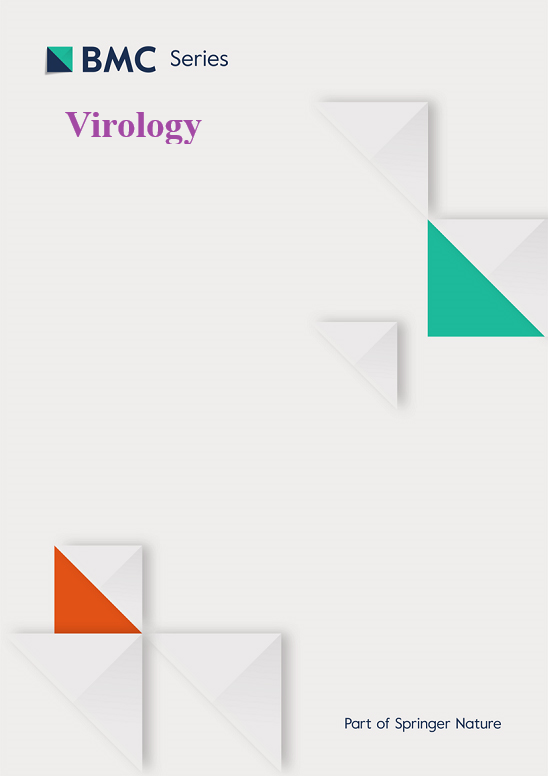海鸥适应的H13禽流感病毒受体结合特异性的改变与其独特的宿主偏好相对应
IF 2.8
3区 医学
Q3 VIROLOGY
引用次数: 0
摘要
禽流感病毒(AIVs)识别α - 2-3皂苷为受体。前期研究表明,α - 2-3皂苷内的结构多样性与aiv的宿主特异性有关。H13型AIV主要是从海鸥中分离出来的,尽管几乎所有的AIV亚型都是从AIV的天然宿主鸭中分离出来的。为阐明H13病毒对海鸥宿主特异性的分子基础,研究了H13血凝素(HAs)的受体结合特异性和病毒受体在海鸥体内的分布。结果表明,H13病毒的重组HA (rHA)对集中的α - 2-3唾液皂苷具有结合偏好,α - 2-3唾液皂苷在海鸥的呼吸道和肠道中广泛分布,而在鸭的结肠中不存在。此外,突变体rHAs的受体结合特异性表明,H13 HA的130环和227位置的氨基酸对聚焦α2-3皂苷的偏好至关重要。本研究结果提示,H13 HA与α - 2-3唾液皂苷的结合特异性是H13病毒对海鸥宿主易感性的关键因素。本文章由计算机程序翻译,如有差异,请以英文原文为准。

Altered receptor-binding specificity of gull-adapted H13 avian influenza viruses corresponds to their unique host preferences
Avian influenza viruses (AIVs) recognize α2-3 sialosides as receptors. Previous studies showed that the structural diversity within α2-3 sialosides is related to the host specificity of AIVs. H13 AIVs are primarily isolated from gulls, although almost all AIV subtypes have been isolated from ducks, the natural hosts of AIVs. To elucidate the molecular basis of the host specificity of H13 viruses to gulls, the receptor-binding specificity of H13 hemagglutinins (HAs) and the distribution of viral receptors in gulls were investigated. The results revealed that recombinant HA (rHA) of H13 viruses had a binding preference for fucosylated α2-3 sialosides, which were distributed widely in the respiratory tract and intestines of gulls but not in the colon of ducks. Moreover, the receptor-binding specificity of mutant rHAs revealed that amino acids in the 130-loop and at position 227 of H13 HA were critical for the preference for fucosylated α2-3 sialosides. The results of the present study suggest that the binding specificity of H13 HA to fucosylated α2-3 sialosides is a key factor for the host susceptibility of H13 viruses to gulls.
求助全文
通过发布文献求助,成功后即可免费获取论文全文。
去求助
来源期刊

Virology
医学-病毒学
CiteScore
6.00
自引率
0.00%
发文量
157
审稿时长
50 days
期刊介绍:
Launched in 1955, Virology is a broad and inclusive journal that welcomes submissions on all aspects of virology including plant, animal, microbial and human viruses. The journal publishes basic research as well as pre-clinical and clinical studies of vaccines, anti-viral drugs and their development, anti-viral therapies, and computational studies of virus infections. Any submission that is of broad interest to the community of virologists/vaccinologists and reporting scientifically accurate and valuable research will be considered for publication, including negative findings and multidisciplinary work.Virology is open to reviews, research manuscripts, short communication, registered reports as well as follow-up manuscripts.
 求助内容:
求助内容: 应助结果提醒方式:
应助结果提醒方式:


